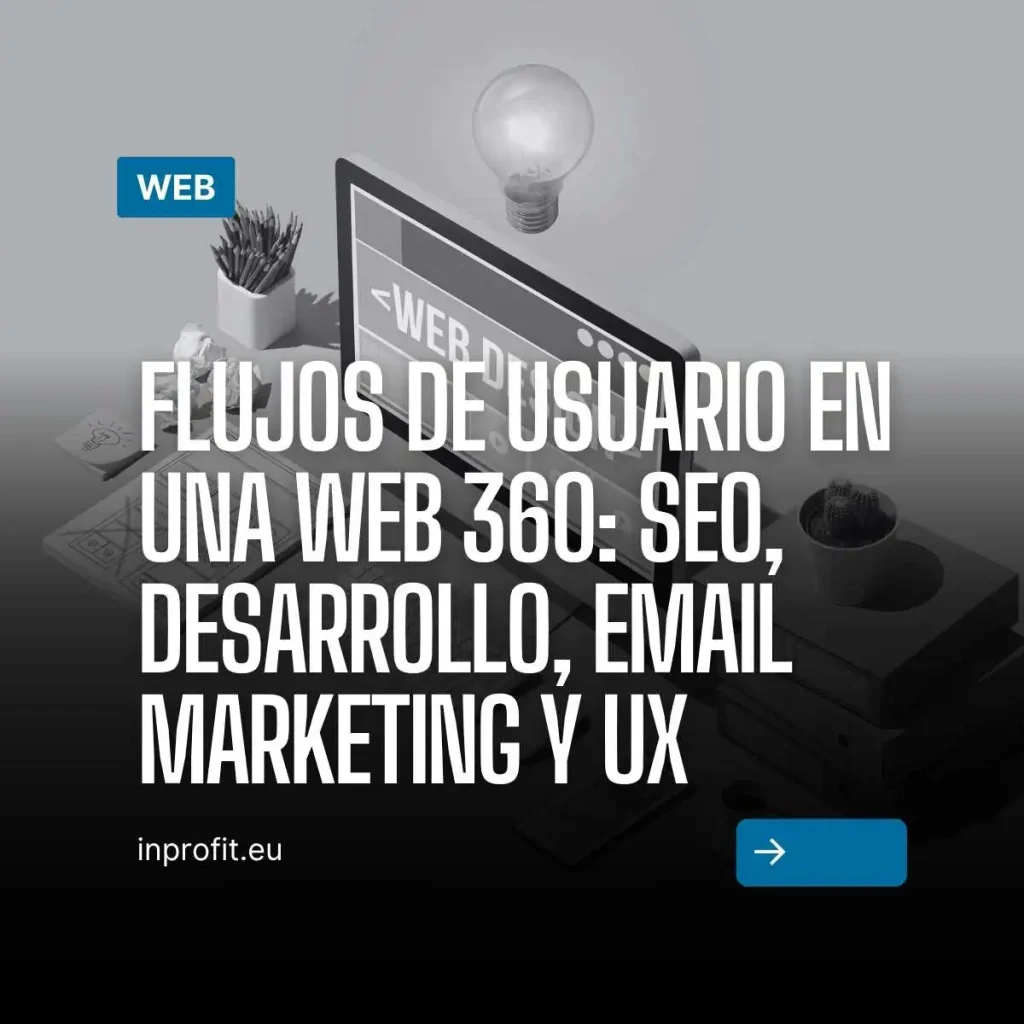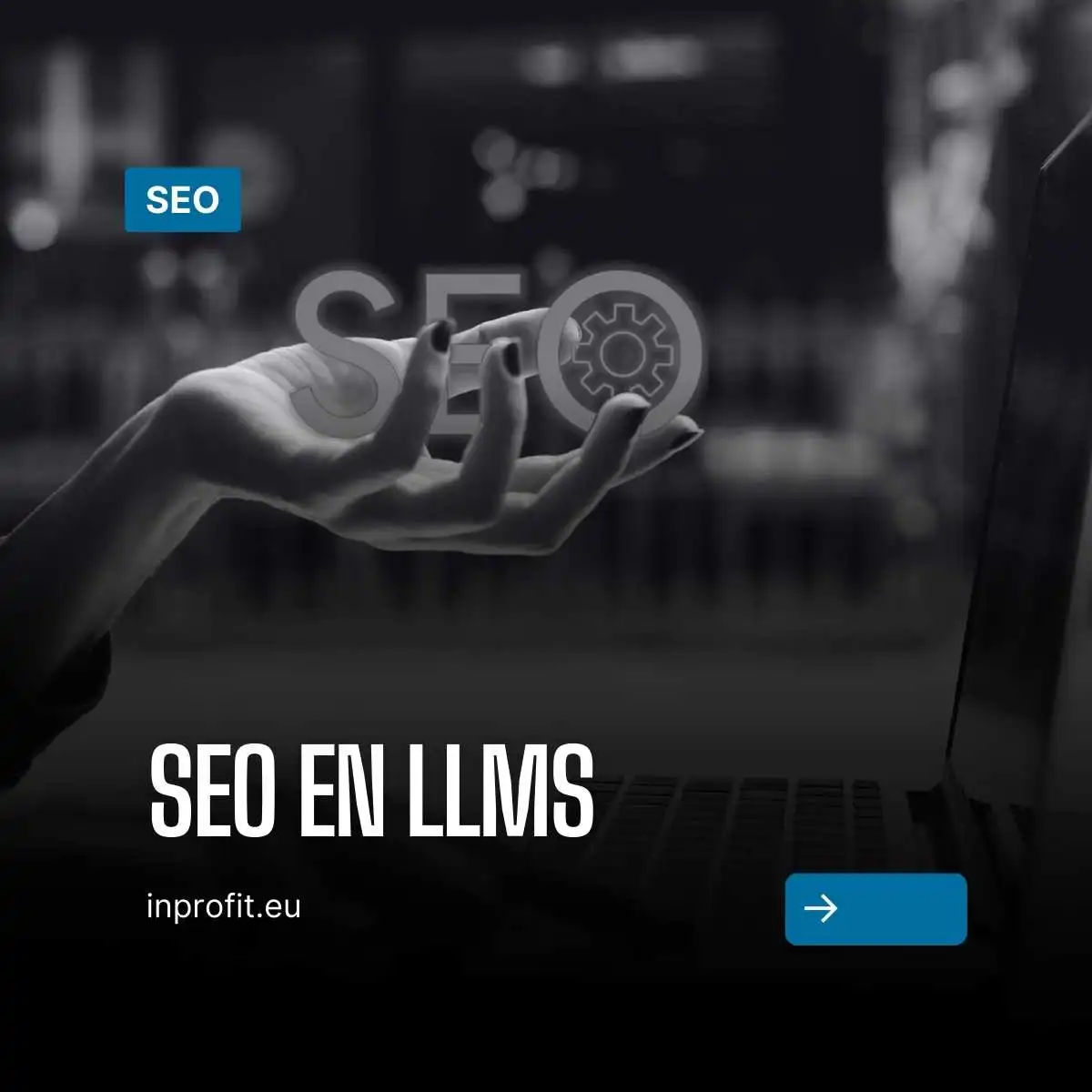In this time of digitalization, optimizing user flows on a website is not only an advantage, but a necessity to achieve business goals. User flows represent the path a visitor takes from the moment they arrive on your site until they complete a desired action, such as making a purchase, registering or sharing content.
To maximize the potential of your website, it is crucial to integrate disciplines such as SEO, web development, email marketing and user experience (UX) in a cohesive way. In this article, we’ll explore how these areas can work together to create effective user flows that drive conversions and build customer loyalty.
What are user workflows?
User flows are the paths that visitors follow on your website, guided by the structure, layout and cues you provide. A well-designed flow ensures that users find what they are looking for intuitively, reduce friction and complete the actions you want them to take. For example, in e-commerce, a typical flow might be: home page → category page → product page → cart → checkout → checkout.
Optimizing these flows not only improves the user experience, but also directly impacts business results. According to studies, 88% of users do not return to a site after a bad experience, while a 1% improvement in conversion rate can significantly increase revenue. Now, let’s look at how SEO, development, email marketing and UX come together to boost these flows.
1. SEO: Attracting the right users from the start.
SEO (Search Engine Optimization) is the starting point for attracting the right users to your website. Without a solid SEO strategy, even the best user flow will be useless if no one reaches your page. SEO is not just about ranking for keywords, it’s about understanding your audience’s search intentions and aligning them with your business goals.
Keys to integrate SEO into user flows:
- Keyword research: Identify terms that reflect your audience’s needs at each stage of the conversion funnel (awareness, consideration, decision). For example, a user searching for “best running shoes” is in the consideration stage, while “buy Nike Air Max shoes” indicates purchase intent.
- Landing page optimization: Create landing pages specific to each type of search, making sure the content is relevant and responsive to the user’s intent. These pages should be designed to guide the user to the next action, such as exploring products or registering.
- Speed and mobile experience: Google prioritizes fast sites adapted to mobile devices. A loading time of more than 3 seconds can increase the bounce rate by 32%, according to Google. This brings us to the next pillar: web development.
2. Web development: Building a solid foundation for flows.
Web development is the skeleton that supports user flows. A technically optimized site ensures that users can navigate smoothly and that search engines index content correctly. Without a solid foundation, even the best UX design or SEO strategy can fail.
How does web development enhance user flows?
- Technical optimization for SEO: Make sure the site has a clear URL structure, a well-organized sitemap and properly implemented meta tags. Tools like Screaming Frog can help you identify technical errors.
- Performance and speed: Use techniques such as image compression, use of CDN (Content Delivery Network) and CSS/JavaScript minification to reduce load times. For example, Amazon found that every 100ms improvement in loading speed increased its revenue by 1%.
- Adaptability and accessibility: Develop a responsive site that works on all devices and complies with accessibility standards (WCAG). This not only improves the user experience, but is also a ranking factor for Google.
- Integration with tools: Set up analytics systems such as Google Analytics or Hotjar to track user behavior in streams. This will allow you to identify friction points, such as pages with high abandonment rates.
3. UX: Designing intuitive and attractive workflows
User experience (UX) is at the heart of user flows. User-centered design removes barriers, reduces confusion and makes interactions enjoyable. UX is not just about aesthetics, it’s about understanding how users think and act to guide them toward your goals.
UX strategies to optimize flows:
- User flow maps: Create diagrams that visualize the paths users must follow. For example, on a hotel booking site, the flow could be: search → results → hotel details → booking form → confirmation.
- Intuitive design: Use design principles such as visual hierarchy, clear buttons and strategic CTAs (calls to action). For example, a “Buy Now” button in a contrasting color can increase conversions by up to 20%.
- User testing: Perform usability tests with tools such as Lookback or Maze to identify weak points in the flows. See how real users interact with your site and adjust the design accordingly.
- Personalization: Use behavioral data to deliver personalized experiences, such as product recommendations based on past visits. This can increase conversion rates by 5-10%, according to McKinsey.
4. Email marketing: Keeping users in the flow
Email marketing is a powerful tool for guiding users through the flow, especially in the consideration and retention stages. Emails allow you to keep in touch with visitors who have left your site, remind them of their interest and motivate them to complete actions.
How to integrate email marketing into user flows:
- Lead capture: Implement subscription forms at strategic points in the flow, such as exit pop-ups or banners on product pages. Offer incentives, such as discounts or exclusive content, to increase conversion rates.
- Automated sequences: Set up automated email flows with tools like Mailchimp or HubSpot. For example, an abandoned cart can trigger a sequence of three emails: reminder, special offer and urgency (e.g., “Last chance!”).
- Segmentation: Divide your mailing list according to user behavior (e.g., visitors who only viewed products vs. repeat buyers). Segmented emails have 30% more opens and 50% more clicks, according to Campaign Monitor.
- UX integration: Ensure that emails have a consistent design with your website and that links lead to conversion-optimized pages, such as a simplified checkout experience.
How to implement a full funnel strategy?
This case study shows how an online sportswear retailer implemented a full-funnel 360 strategy to increase conversions, improve customer retention and boost revenue.
By integrating SEO, web development, user experience (UX) and email marketing with martech tools, the company achieved a 25% increase in conversion rates and a 15% increase in customer retention in six months.
Stage 1: Awareness – Attracting traffic through SEO
Objective: To attract fitness enthusiasts looking for quality sportswear.
Strategy: Semrush was used to research keywords, identifying high intent terms such as “best leggings for yoga” (consideration) and “buy breathable sports shirts” (decision). A series of blogs on topics such as “10 exercises to workout at home” were created, optimized for awareness keywords, increasing organic traffic. Using Google Search Console and Looker Studio, click-through rates were analyzed and content was adjusted based on user intent.
Execution: Landing pages were developed for each article with Contentful, ensuring load times of less than 2 seconds by integrating a Vercel CDN. Internal links guided users to product categories, reducing bounce rate by 20%.
Results: Organic traffic grew 30% in three months, with 40% of visitors interacting with product pages, according to Google Analytics data.
Stage 2: Consideration – Flow optimization with UX
Objective: Facilitate the transition from exploration to frictionless product selection.
Strategy: Hotjar heat maps were used to detect abandonment points on category pages, revealing issues with unclear filters. Using Figma, the UX team redesigned these pages with intuitive filters (by size, type of activity) and prominent CTAs such as “Buy Now” in contrasting colors. Optimizely enabled A/B testing of button placement, increasing clicks by 15%.
Execution: Personalization was implemented with Dynamic Yield, recommending products based on browsing history (e.g., leggings for users who visited yoga blogs). Usability testing with Maze ensured intuitive flows, reducing navigation time by 25%.
Results: Time on product pages increased by 18%, and add-to-cart rates improved by 12% as users found relevant products faster.
Stage 3: Conversion – Smooth payment process
Objective: Maximize completed purchases by optimizing the payment process.
Strategy: The development team used Webflow to create a single-page, mobile-optimized checkout experience with load times under 1.5 seconds using Cloudflare’s CDN. Google Tag Manager integrated Hotjar to track checkout abandonments, identifying friction such as long forms. The form was simplified to essential fields (name, email, payment), complying with WCAG accessibility standards using WAVE.
Implementation: Added a guest checkout option, and integrated Stripe for seamless payments. Screaming Frog ensured clean URLs and SEO-correct metatags, improving payment page visibility.
Results: Payment completion rates rose 22%, and overall conversions grew 25%, contributing to a 10% revenue increase.
Stage 4: Retention – Loyalty Email Marketing
Objective: Re-engage users to encourage repeat purchases and loyalty.
Strategy: Implemented Mautic was implemented to create automated email flows. For abandoned carts, a sequence of three emails was designed: reminder (1 hour), 10% discount offer (24 hours later) and urgency (48 hours later). Customer.io segmented users into “first-time buyers” and “repeat customers,” personalizing emails with recommendations based on previous purchases.
Execution: Emails were designed with Litmus to ensure mobile compatibility and consistency with the UX of the website. Links led to an optimized checkout page. A loyalty program with points for purchases was launched and promoted via email.
Results: Abandoned cart recovery reached 18%, email open rates reached 35% (30% above industry average), and repeat purchases grew by 15%, according to Mautic data.
Integrated impact
By aligning SEO, UX, development and email marketing, the store created a cohesive full-funnel 360 strategy. Semrush and Contentful attracted qualified traffic, Figma and Optimizely optimized user flows, Webflow and Stripe ensured smooth conversions, and Klaviyo strengthened retention. The martech stack enabled data-driven decisions, with Google Analytics and Hotjar providing insights throughout the funnel. Revenue grew 20% in six months, with a 25% increase in conversion rates and 15% increase in customer retention, demonstrating the power of an integrated approach.
The power of integration
Working user flows holistically requires close collaboration between SEO, development, email marketing and UX. Each discipline brings unique value, but their true potential is unleashed when they work in harmony.
By attracting the right users, guiding them with an intuitive experience, keeping them engaged with strategic emails and backing it all up with solid development, your website will become a conversion machine that drives your business goals.
Start today: analyze your current user flows, identify points of improvement and align your teams to create a digital experience that not only meets, but exceeds your customers’ expectations. Ready to take your website to the next level?




